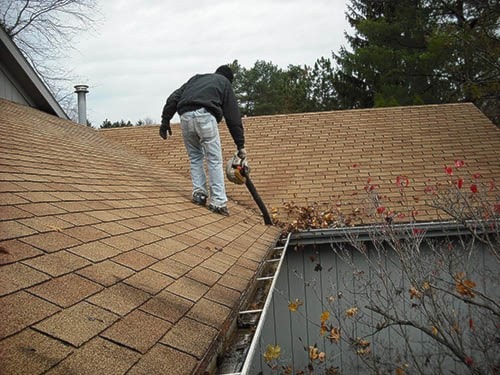Autumn has arrived and so too have the elements that will assail your home through the next six months or more.
Shorter days mean lower temperatures, more precipitation, more leaves and more potential hazards to wreak havoc on your home’s structure — especially water.
One of the most important tasks to do around your home to prepare for autumn and winter is to remove the fallen leaves, especially those that land on your roof or, inevitably, in your gutters, eavestroughs or downspouts.
Leaves can clog essential water escape routes and possibly enter walls, garages, and other areas of your home where it can do tremendous damage.
As leaves and other autumn detritus fall, they can clog up your gutters and downspouts, preventing water from escaping your roof and getting away from your house.
“Right now it’s the beginning of the rainy season, so you definitely want to get the gutters cleaned out,” says Gorilla Property Services general manager Mark Amery.
His Maple Ridge-based company provides this service to people who cannot or do not want to do this themselves.
“We actually vacuum them out for people. Vacuuming and sponge cleaning them is even better,” Amery says.
“It’s probably 99 per cent of the work right now. It’s like that twice a year; spring and fall, right.”
Gutters and downspouts that fill with leaves and debris often welcome insects and other small creatures that nest in the detritus. They can even try to get into your attic and, potentially, cause much damage.
So it is important to take time to repeatedly clean eavestroughs, gutters and downspouts until all your area’s trees have completely shed their load of leaves.
The cleanings will help prevent water from entering your home.
Amery says the best chance to avoid damage is to make sure you water test all your downspouts.
“Make sure to have them water tested, all your downspouts,” Amery adds. “One of the worst things is getting a company or somebody cleaning your own gutters then you don’t water test the downspouts to make sure they’re not clogged.”
There’s nothing worse than spending the whole day cleaning out all of your gutters, then to find out that it’s the downspouts that are clogged as well with gunk and debris. Then it won’t be long before the gutters fill up and the next thing is you start having overflow of the gutters again.
There is also a variety of products available to install on eavestroughs that keep leaves and creatures out while still letting water pass through. Checking with local home improvement stores or contractors can help provide information on what’s best for your home.
Here are tips on other things you should consider doing to help make your home more comfortable during autumn and winter:
• Caulk around windows, doors and openings: Caulking around windows and doors helps prevent cold air from coming into the house and warm inside air from getting out. Having a good seal around windows, doors and other openings will not only help make your home comfortable, it will also help you save money on your energy bill
Besides windows and doors, caulking around vents (such as your dryer and bathroom exhaust fan) and cables and pipes that run outside of your house is also a good idea.
• Check and replace weather stripping: As weather stripping ages, it becomes less effective and needs replacing. Visually check stripping around exterior doors and windows (including garage) and replace worn or cracked stripping.
If you can feel air moving when your doors and windows are closed, ensure stripping has been installed properly or that it’s the correct stripping.
• Inspect your roof and chimney: It’s always a good idea to visually check your roof in the fall. Wildlife, weather conditions and tree foliage can speed up deterioration of shingles. Best to catch any issues before November’s downpours
• Shut-off and drain outside faucets: Your outside faucets are susceptible to freezing in the winter and can lead to freezing pipes and faucets, creating expensive repair needs.
All outside faucets have a shut-off valve located inside, usually located close to where the faucet exits the house. Close the valve and drain the faucet.
Amery says Gorilla Property Services frequently does this for folks, as well.
“We can shut down [outside water faucets]. Some people ask us to turn off their water for them, which we can do. We don’t blow out the lines or anything like that. But we can definitely shut it down. We usually have the little caps you can put on them for the winter; the insulated caps you can buy at Home Depot.”
Kevin Gillies is a freelance
writer for Black Press.
